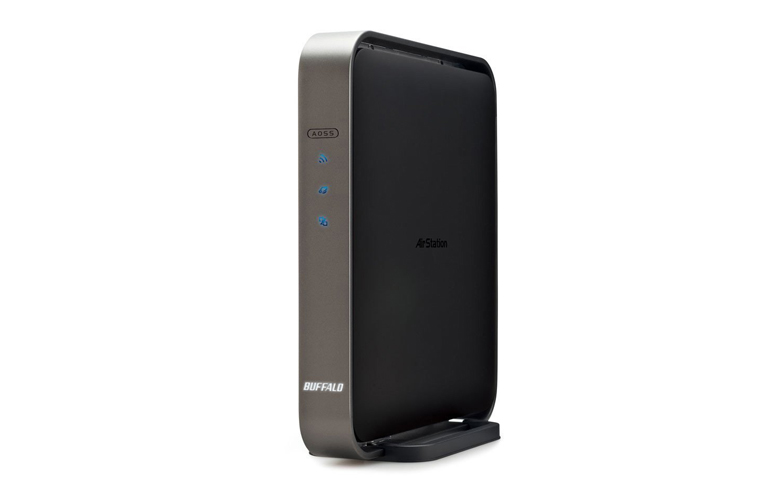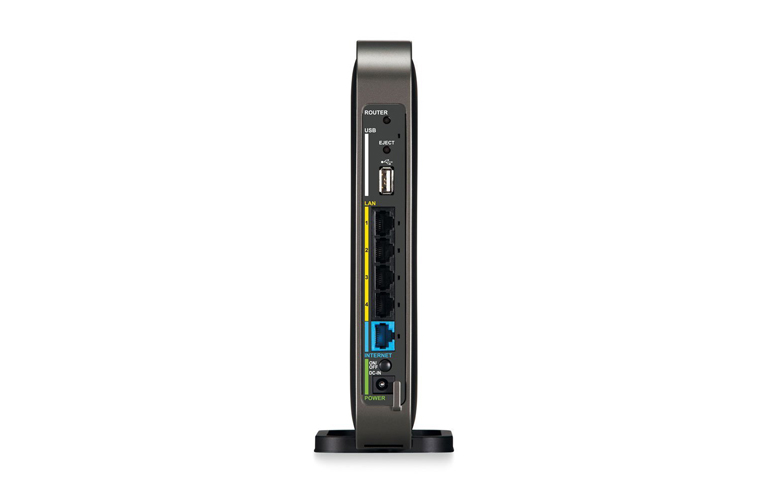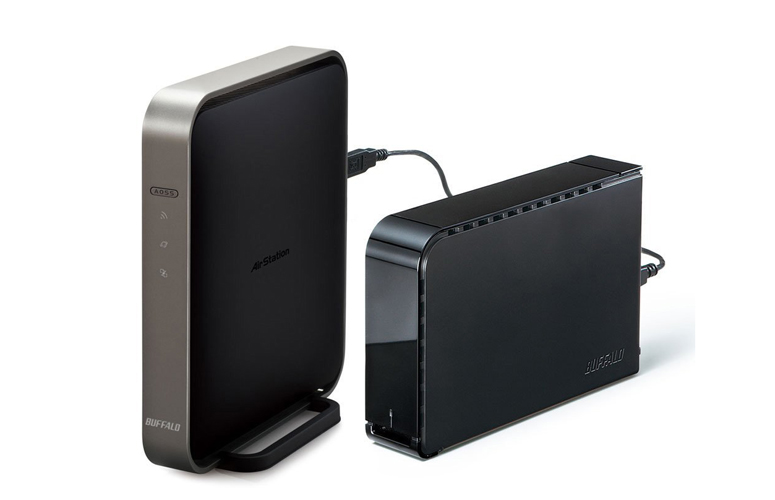Laptop Mag Verdict
Using the new 802.11ac protocol, the Buffalo AirStation AC1300/N900 Gigabit Dual Band router raises the bar for wireless speed, but you'll need an adapter to take full advantage.
Pros
- +
Blazing speed
- +
Quick initial setup
- +
Four LAN ports
Cons
- -
Currently requires bridge to take full advantage of 802.11ac
- -
One USB port
- -
Advanced setup is confusing
Why you can trust Laptop Mag
Buffalo Technology is back in business -- literally and figuratively. A few years ago, the Japanese company had to discontinue its wireless router products due to a patent lawsuit. Now, with the Buffalo AirStation AC1300/N900 Gigabit Dual Band Wireless Router WZR-D1800H, Buffalo has dethroned many erstwhile competitors by releasing the fastest small business router ever. How is that possible? For starters, the WZR-D1800H uses the draft specification for 802.11ac. This successor to 802.11n uses eight wireless streams at the same time. Yet, the router works fine with older 802.11n and even provides a speed boost for just about any laptop, smartphone and tablet over Wi-Fi.
Design

Click to Enlarge

Click to EnlargeBuffalo beat NETGEAR and Linksys to the punch, barely. (At press time, NETGEAR had just started shipping its flagship R6200 WiFi Router 802.11ac Dual Band Gigabit model.) The all-black router, which sits on a pedestal in an upright position, is easy to power up (the router glows red and turns white once it is on). The vertical orientation is a boon for those in cramped offices because of a smaller footprint and easier access to the ports. You don't have to crane your neck to the side to see the ports.
The WZR-D1800H has four Gigabit Ethernet ports, as well as one USB port. That's fine, but the Western Digital My Net N900 has seven Ethernet and two USB ports.
Setup
Unfortunately, the WZR-D1800H has one flaw that is hard to overlook: the setup process is confusing. While a CD wizard walks you through the basics, which took only about two minutes, configuring advanced settings means wading through a textual interface, which makes it hard to know where to look. In some sections, blue highlighted text links are difficult to read. The configuration options use old-school HTML programming compared to the wizards and apps included with Linksys and Netgear routers. We'd prefer an app that runs in the system tray that makes advanced options easier to find. From unboxing to surfing, we spent about 10 minutes configuring the router and enabling a few advanced settings.
Performance
The 802.11n standard bonded 40-MHz channels together, but 802.11ac doubles that bandwidth. The result: the WZR-D1800H can transfer more than 1GB of data in just a few seconds. The router could change your backup and networking strategy. Note that the "1300" reference in the product name means this router has a theoretical top speed of 1.3 Gbps. (Real world results, as we'll see, are a bit off that mark.)
With a little effort, you can get the WZR-D1800H humming along at blazing speeds. We testing using two high-end HP ENVY 17 laptops with Intel Core i7 processors equipped with the Intel 6300 chipset, which transmits three wireless streams in 802.11n. Because Buffalo does not offer an 802.11ac adapter yet, and there are no laptops that support the standard, we used the Buffalo Wireless AC1300/N450 Gigabit Dual Band Media Bridge WLI-H4-D1300 (which itself costs $179) for testing. We plugged one laptop into the router and one into the bridge to simulate how you'd normally connect with an 802.11ac adapter.
The result? Jaw-dropping speeds. With everything tricked out and the 80-MHz channel selected, the two laptops connected at 360 Mbps from five feet -- easily the fastest wireless speed we've ever seen. That's more than twice the average for routers (143 Mbps), and the fastest 802.11n speeds we've tested -- the Netgear N900 Wireless Dual Band Gigabit Router WNDR4500 -- notched just 164 Mbps at 5 feet. This meant we could copy a 1.2GB file in only 8 seconds. We copied a 6GB folder of PDF files and artwork in about 8 minutes, matching and even exceeding the results from a wired network connection.
However, there are some limitations to this setup. For one, the AC1300 Media Bridge requires an A/C power source, whereas Netgear's A6200 WiFi USB Adapter (which costs $69) can run off USB power alone. Also, at 8.4 x 7.2 x 1.3 inches and 17.6 ounces, you're unlikely to tote the AC1300 around as much as your notebook.
Without the AC1300 Media Bridge, the Buffalo WZR-D1800H's 802.11n speeds were more pedestrian: 80Mbps from 50 feet and 40Mbps from 150 feet. By comparison, the averages at those respective distances are 71 and 56 Mbps. The Netgear N900 maintained throughput of 100 Mbps at 150 feet, more than twice that of the Buffalo router.
Features

Click to EnlargeBuffalo likes to tout the AOSS setup process for the WZR-D1800H as a bonus feature. Once you enable AOSS for each client, the router auto configures the security settings. We were not able to test AOSS setup the way Buffalo intends this to work: pushing a button on the router, then clicking a setup button on your laptop for the client adapter software to enable security and set pass-codes automatically. Once the client adapter starts shipping, this setup process will help those who do not want to bother with any manual security steps.
We also connected a 1GB thumbdrive to the router's USB port and had no problems configuring the storage. Otherwise, the WZR-D1800H has the typical array of WPA encryption options and DLNA media streaming.
Verdict
For those who just upgraded your home or office wireless network to 802.11n, it might be best to wait until 802.11ac matures, and there are more adapters and laptops that support the new standard. But for those who crave the ultimate wireless performance for backups, file transfers and HD media streaming, the Buffalo AirStation WZR-D1800H is a strong option.
Buffalo AirStation AC1300/N900 Gigabit Specs
| Company Website | www.buffalotech.com |
| Ports | 4 Gigabit Ethernet |
| Size | 8.4 x 7.2 x 1.3 inches |
| Supported Protocols | 802.11AC |
| Weight | 18 ounces |
| Wireless Bands | 5.0GHz, 2.4 GHz |

John Brandon has lived what he writes about for Forbes, Inc., Wired, Popular Mechanics, Fox News, and many others. He has a BA in journalism from the University of Northwestern and spent over a decade in the corporate world, becoming director of Information Design at Best Buy at the ripe old age of 26. In the aftermath of a corporate restructuring, he traded hats to become a full-time columnist/journalist and has published more than 15,000 articles since that time. He and his wife live west of Minneapolis and have four grown children.
